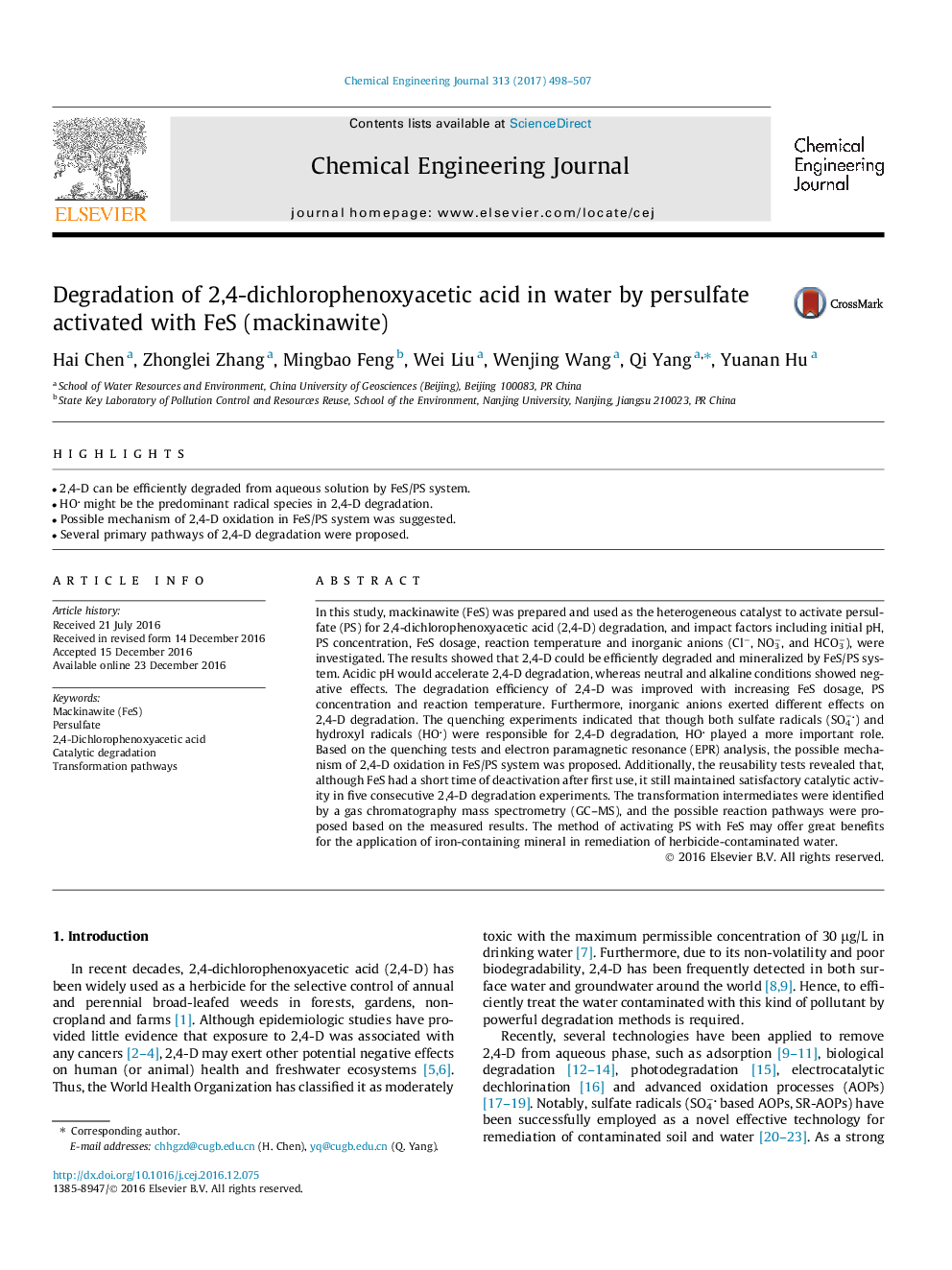| Article ID | Journal | Published Year | Pages | File Type |
|---|---|---|---|---|
| 6466574 | Chemical Engineering Journal | 2017 | 10 Pages |
â¢2,4-D can be efficiently degraded from aqueous solution by FeS/PS system.â¢HO might be the predominant radical species in 2,4-D degradation.â¢Possible mechanism of 2,4-D oxidation in FeS/PS system was suggested.â¢Several primary pathways of 2,4-D degradation were proposed.
In this study, mackinawite (FeS) was prepared and used as the heterogeneous catalyst to activate persulfate (PS) for 2,4-dichlorophenoxyacetic acid (2,4-D) degradation, and impact factors including initial pH, PS concentration, FeS dosage, reaction temperature and inorganic anions (Clâ, NO3â, and HCO3â), were investigated. The results showed that 2,4-D could be efficiently degraded and mineralized by FeS/PS system. Acidic pH would accelerate 2,4-D degradation, whereas neutral and alkaline conditions showed negative effects. The degradation efficiency of 2,4-D was improved with increasing FeS dosage, PS concentration and reaction temperature. Furthermore, inorganic anions exerted different effects on 2,4-D degradation. The quenching experiments indicated that though both sulfate radicals (SO4â) and hydroxyl radicals (HO) were responsible for 2,4-D degradation, HO played a more important role. Based on the quenching tests and electron paramagnetic resonance (EPR) analysis, the possible mechanism of 2,4-D oxidation in FeS/PS system was proposed. Additionally, the reusability tests revealed that, although FeS had a short time of deactivation after first use, it still maintained satisfactory catalytic activity in five consecutive 2,4-D degradation experiments. The transformation intermediates were identified by a gas chromatography mass spectrometry (GC-MS), and the possible reaction pathways were proposed based on the measured results. The method of activating PS with FeS may offer great benefits for the application of iron-containing mineral in remediation of herbicide-contaminated water.
